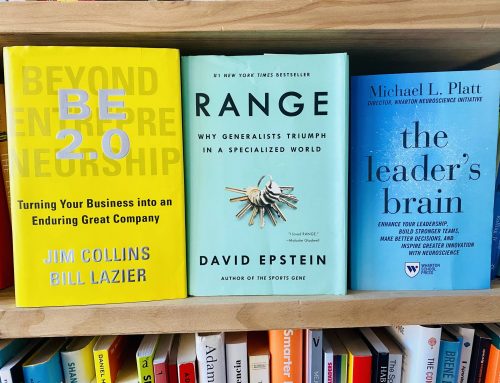If you had problems in your family would you ever consider laying off one of your children?
Management expert Simon Sinek (the author of Start With Why and Leaders eat Last) uses the analogy of a leader being like a parent when he shares the story of Charlie Kimm, the CEO of a company called Next Jump, who implemented a policy of lifetime employment in his organization. For him, if we would never fire our children, why would we fire our employees? When employees have any issues at Next Jump, the organization coaches them and supports them to address the problem. If the company is part of the problem, why wouldn’t it be part of the solution? Not only is this possible but it’s also driving extraordinary results at Next Jump.
For Sinek, leading has more to do with setting the proper environment than with our innate qualities. The key lies in providing a deep sense of trust and cooperation among our people. “If you get the environment right, every single one of us has the capacity to do remarkable things.”, Sinek argues. The reason is that when we feel safe, when we feel protected by our leader, the natural reaction is trust and cooperation. Without that feeling of safety (the so-called psychological safety), people won’t make their own decisions or assume risk due to fear (of being told off, of losing their jobs…). And, even worse, if we don’t build a safe environment, everything that we instill as leaders will be seen as a manipulation.
(When there is no safety): “And now s/he comes and tells me to do this…”
(When there is safety): “I will do it because it’s him/her. Because s/he would’ve done it for me”
When the leader makes the choice to put the safety of the people inside of the organization first, remarkable things happen.
I believe that leaders can be divided into three groups depending on how they manage pressure and instill trust in their teams: they can be umbrella leaders, cascade leaders or filter leaders.
Umbrella leaders gather all the pressure so that their people don’t get any. But this results in them exploiting (like a dam full of water) and employees end up getting soaked by the flood.
Cascade leaders don’t stick to pressure, they just divert it straight to their people, and in some cases even maximize it, increasing the pressure every time it moves to the next link in the chain. “You’d better do this because it comes from above” is something they would typically say.
The third group, the filter leaders, also receive pressure from above like the other two, but they filter it and minimize it so that their people are aware of the situation but don’t feel fear towards it. They are transparent at explaining each situation, but they are aware of their role and make sure their people feel protected and listened to authentically by everyone, especially by the leader. They make the difference between worrying and fearing.
In a world that becomes more and more uncertain, providing safety becomes even more fragile and vital to success than ever before. The more uncertainty, the more leaders need to filter this pressure.
If leading is like educating, don’t do something to your people that you wouldn’t do to your children.







Leave A Comment